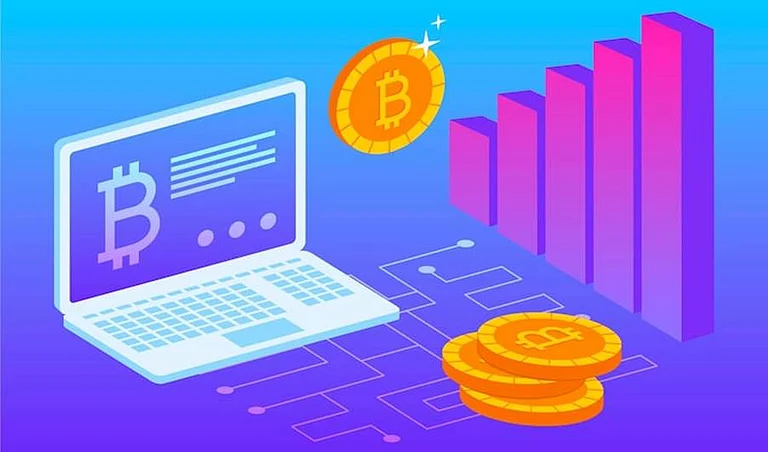Automated Market Makers (AMMs) have changed the way individuals exchange cryptocurrencies by providing decentralized, constantly available markets. In contrast to conventional exchanges using order books and middlemen, AMMs utilize algorithms and liquidity pools to set prices and execute trades.
Uniswap, among the most widely used decentralized exchanges (DEX), uses an AMM structure that automatically shifts token prices according to supply and demand within the pools. While this technology gives users constant liquidity, it also creates a so-called slippage effect — the disparity between the intended price of a trade and the price at which it actually executes.
Knowing the impact of AMM models such as Uniswap's on slippage is crucial for traders, liquidity providers, and all parties interested in decentralized finance (DeFi). This article deconstructs how slippage works, its causes, and why and how AMM mechanisms have been adapted to reduce its effects.
Understanding Automated Market Makers (AMMs)
What Are AMMs?
AMMs are contracts that enable the direct trading of cryptocurrencies from liquidity pools instead of matching buy and sell orders. LPs put pairs of tokens into these pools, and traders engage directly with the pool to exchange one asset for another.
Each trade alters the balance of tokens in the pool, and the pool adjusts the price of the token accordingly. The simplicity and freedom of AMMs — that anyone can add liquidity and anyone can trade without asking permission — is their elegance.
Principal Features of AMMs
Infinite Liquidity: Traders can trade at will without requiring a counterparty.
Permissionless Addition of Liquidity: Anyone can add liquidity and receive fees.
Transparency: All actions and all pricing mechanisms are controlled by public smart contracts.
Algorithmic Pricing: Token prices fluctuate automatically after every trade depending on pool balance.
This mechanism for automatic price correction is what creates slippage — a salient feature of AMM-based trading.
What Is Slippage?
Slippage is the disparity between the price you anticipate when opening a trade and the price you receive when it fills. It is an inherent consequence of the operation of AMMs.
When a trader exchanges tokens, the transaction alters the balance of the pool. This update moves the exchange rate since AMMs constantly reprice based on liquidity available. Large trades or low liquidity pools induce more significant price movement, which leads to greater slippage.
For example, when a person purchases a token in bulk from a limited pool, it reduces the supply of that token and raises its price immediately. The trader thus pays a little extra per additional token — the very mechanism that creates slippage in decentralized markets.
Why AMMs Such as Uniswap Suffer Slippage
Uniswap's design ensures that there is always liquidity available, even for small or less in-demand tokens. This does come with a cost, however: price sensitivity. Every trade directly influences the composition of the pool, and thus the token price.
In traditional markets, several orders across various price levels soak up trades incrementally. In AMMs, there is one liquidity pool that contains all available liquidity, and its token ratio dictates price movement. Large trades displace prices more squarely because they alter the pool's ratio more dramatically.
Slippage in AMMs, therefore, is not created by inefficiency but by design — it's the expense of ensuring continuous liquidity.
Variables Affecting Slippage in AMMs
There are a number of factors that determine the amount of slippage at the time of a transaction on decentralized exchanges:
1. Relative Trade Size to Pool Size
The most obvious factor is how big your trade is versus the overall liquidity in the pool. Small trades typically have insignificant slippage since they do not impact the pool's balance significantly. Large trades, on the other hand, have a far larger impact and result in greater slippage.
2. Depth of Liquidity Pool
Large liquidity pools (those with significant quantities of both tokens) can be better absorbed by trades, and prices are maintained stable. Shallow pools have more drastic price fluctuations with each trade.
3. Market Volatility
In times of high volatility, price fluctuations outside the pool will make the token ratio diverge rapidly and produce volatile slippage upon executing a transaction.
4. Network Congestion
Because blockchain transactions are slow to confirm, the pool price may shift between when you enter your trade and when it is executed. Slippage can be exacerbated by this latency, particularly under heavy network loads.
5. AMM Design and Fee Structure
Different AMMs use varied mechanisms for liquidity management. Some impose dynamic fees that adapt to volatility, helping to offset slippage. Others introduce models like concentrated liquidity, which localize liquidity around active price ranges to make swaps more efficient.
How Slippage Occurs Step-by-Step
To understand this better, let’s break it down in simple steps:
Trade Quotation: A trader sees the current token price and decides to execute a swap.
Transaction Broadcast: The exchange is broadcast to the blockchain network to be confirmed.
Pool Adjustment: The transaction alters the token ratio of the pool, automatically adjusting the price.
Market Activity: If other traders engage with the pool before confirmation, prices can change even further.
Execution: The exchange settles at a slightly different price, usually higher or lower than intended — that discrepancy is slippage.
Slippage is not always bad; it's just an indication of how liquidity dynamically adjusts in decentralized settings.
How Uniswap's Model Influences Slippage
Uniswap's AMM model depends solely on the liquidity pool balance to set prices. Such a mechanism implies the token price is always a derivative of the amount of liquidity left after each swap.
The important point here is that concentration of liquidity dictates sensitivity to slippage. If a pool is short of funds, even a minimal trade moves prices substantially. On the other hand, pools with greater liquidity have more stable prices since the ratio moves less per trade.
This concept became a focal point in Uniswap's development. While initial iterations distributed liquidity equally among all prices, Uniswap v3 brought concentrated liquidity, where providers could deposit around specific price ranges. This optimized markets and significantly minimized average slippage for the majority of trades.
Comparing Uniswap v2 and Uniswap v3
Model | Liquidity Approach | Slippage Characteristics | Ideal Use Case |
Uniswap v2 | Liquidity spread evenly across the entire price range | Higher slippage for large trades and low-liquidity pools | Simpler model suitable for general trading |
Uniswap v3 | Liquidity concentrated near active price ranges | Lower slippage for trades within active ranges; higher outside those ranges | Best for high-volume pairs with predictable prices |
Uniswap v3 represents a significant improvement in slippage efficiency, but it requires more active management from liquidity providers. If prices move outside their chosen range, their liquidity becomes inactive until rebalanced.
Pros and Cons of AMM-Based Pricing Systems
Advantages
Constant Availability: Traders can execute swaps at any time, even without buyers or sellers.
Decentralization: No central authority controls trades or pricing.
Predictable Pricing Mechanisms: The process is transparent and governed by algorithms rather than market makers.
Accessibility for All Users: Retail traders and institutions alike can participate equally.
Drawbacks
Higher Slippage on Large Trades: Big transactions significantly impact prices.
Exposure to Impermanent Loss: Liquidity providers face value fluctuations as token ratios shift.
Front-Running Risks: Bots can exploit pending transactions, increasing effective slippage.
Low-Liquidity Challenges: Less popular tokens often face higher price distortion due to small pool sizes.
How Traders Can Manage and Reduce Slippage
While slippage can’t be completely avoided, it can be minimized through careful trading practices:
Trade in High-Liquidity Pools: Choose pools with substantial total value locked (TVL).
Set a Slippage Tolerance: Define a maximum allowable price deviation in your DEX settings.
Break Large Trades into Smaller Parts: This prevents sharp price swings during execution.
Use DEX Aggregators: Platforms like 1inch or Paraswap find the most efficient route across multiple pools.
Trade During Stable Periods: Avoid times of extreme volatility or heavy network congestion.
Broader Impact: What Slippage Tells Us About AMMs
Slippage is more than just a trading inconvenience — it’s a reflection of the economic design of decentralized markets. It shows how liquidity, volatility, and user activity interact within AMMs.
For developers, slippage serves as a benchmark for designing more efficient protocols. For traders, it highlights the importance of liquidity selection and timing. For liquidity providers, understanding slippage helps them gauge how efficiently their capital is being utilized.
Modern DeFi platforms are now experimenting with hybrid AMMs, virtual liquidity, and dynamic pricing formulas to make trading smoother and slippage lower — but without sacrificing decentralization.
Conclusion
Automated Market Makers like Uniswap have revolutionized decentralized trading by replacing traditional order books with algorithmic liquidity pools. Their design makes markets efficient and accessible but also introduces slippage as an inherent feature.
Slippage reflects how liquidity responds to trade size and market conditions. It is not a flaw but a trade-off for maintaining decentralized, continuous liquidity. As AMMs evolve — from Uniswap v2 to v3 and beyond — the goal remains to balance efficiency, fairness, and user experience.
For traders and liquidity providers alike, understanding how AMM models affect slippage is crucial. It helps in choosing better pools, optimizing trade execution, and navigating DeFi markets with greater confidence and clarity.
FAQs
1. Why does slippage occur more often in decentralized exchanges?
Because AMMs automatically adjust prices based on pool ratios, each trade changes the price. Centralized exchanges, by contrast, match orders from many users, distributing the impact more evenly.
2. Can slippage ever be completely eliminated?
No. As long as prices depend on liquidity balance, slippage will exist. The goal is to minimize it through deeper pools and better liquidity concentration.
3. Why do smaller pools show higher slippage?
In small pools, even a moderate trade can significantly alter the balance, causing a noticeable price change.
4. How does Uniswap v3 help reduce slippage?
By allowing liquidity providers to focus their funds around specific price ranges, Uniswap v3 increases effective liquidity at active prices, leading to smaller price movements per trade.
5. What is an ideal slippage tolerance for most traders?
For stablecoins or large-cap assets, a 0.1% -- 0.5% tolerance is usually safe. For volatile or low-cap tokens, 1%–2% may be more realistic.

























